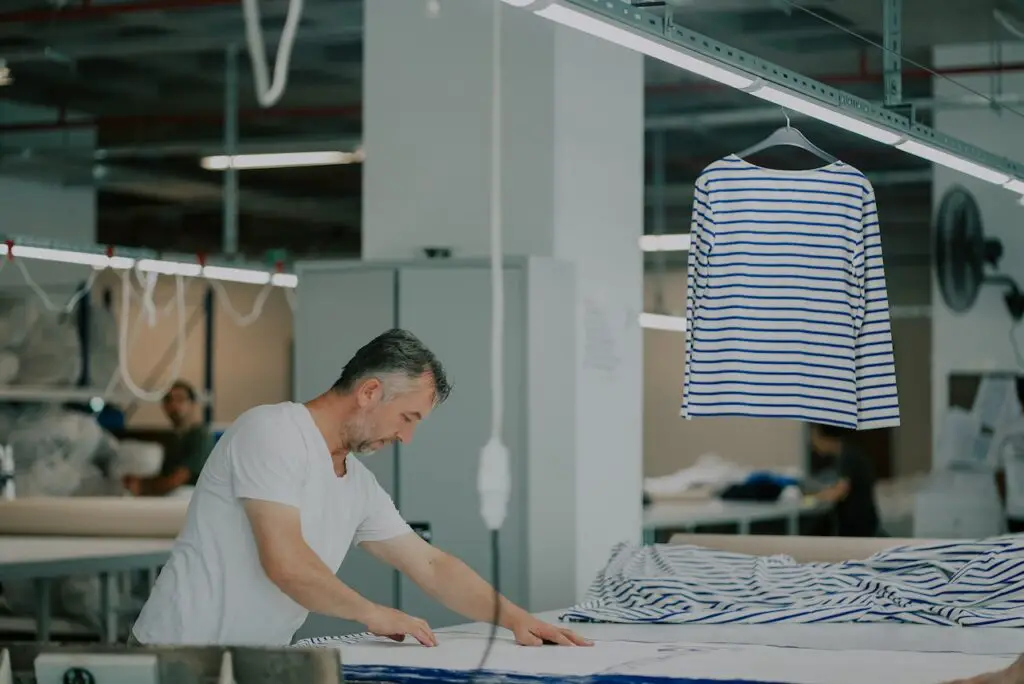In recent years, there has been a significant shift towards sustainable and eco-friendly practices in various industries, and the fashion world is no exception. Consumers are becoming increasingly conscious of the environmental impact of their choices, leading to a rise in the demand for eco-friendly fashion. This article delves into the emerging trend of sustainable style for men, exploring the benefits, key elements, and ways men can embrace eco-friendly fashion.
The Growing Importance of Eco-Friendly Fashion
Recently, there has been a growing awareness of the detrimental effects of fast fashion on the environment. From excessive water usage to harmful chemical pollutants, the fashion industry has contributed significantly to environmental degradation. As a result, consumers are seeking alternatives that prioritize sustainability and ethical practices. This shift in consumer behavior has paved the way for the rise of eco-friendly fashion, including sustainable style for men.
Related: Beach Vibes and Beyond: Men’s Shorts That Take You from Sand to City

Understanding Eco-Friendly Fashion
Understanding eco-friendly fashion is essential in today’s environmentally conscious world. Eco-friendly fashion, also known as sustainable fashion, is a movement that aims to minimize the negative impact of the fashion industry on the planet.
It encompasses various practices, such as using organic or recycled materials, reducing waste, and ensuring ethical manufacturing processes. By choosing eco-friendly fashion, individuals contribute to the preservation of natural resources, reduction of pollution, and improvement of worker conditions. This conscious approach to fashion encourages consumers to make informed choices, considering the entire lifecycle of a garment.
Understanding the significance of eco-friendly fashion empowers individuals to align their style preferences with sustainable values, promoting a more environmentally friendly and socially responsible fashion industry. By supporting eco-friendly brands and embracing sustainable practices, individuals can become catalysts for positive change and contribute to a more sustainable future.
Sustainable Materials for Men’s Clothing
When it comes to sustainable materials for men’s clothing, there is a wide array of options available. Organic cotton, for instance, is grown without the use of harmful pesticides, reducing the environmental impact of cultivation. Hemp is another sustainable material that requires minimal water and no pesticides to grow, making it an eco-friendly choice. Recycled polyester, made from post-consumer plastic bottles, is gaining popularity as a sustainable alternative to traditional polyester.
Other sustainable materials include bamboo, which grows rapidly and requires fewer resources, and Tencel, a fabric made from sustainably sourced wood pulp. By opting for clothing made from these sustainable materials, men can enjoy stylish garments while making a positive impact on the environment.
Related: Men’s Summer Casual Outfit Ideas: Stay Stylish and Comfortable

Ethical Manufacturing and Fair Trade
Ethical manufacturing and fair trade are crucial aspects of sustainable fashion. Ethical manufacturing ensures that the production processes of clothing and accessories prioritize the well-being and fair treatment of workers. This includes providing safe working conditions, fair wages, and reasonable working hours. Fair trade goes a step further, aiming to empower workers and producers in developing countries by ensuring fair prices and promoting sustainable practices.
By supporting brands that uphold ethical manufacturing and fair trade principles, men can contribute to a more equitable and just fashion industry. It is important to choose brands that are transparent about their supply chains and demonstrate a commitment to social responsibility, fostering a positive impact on the lives of garment workers worldwide.
Minimalism and Capsule Wardrobes
Minimalism and capsule wardrobes have gained popularity as sustainable approaches to men’s fashion. Minimalism, as a lifestyle choice, encourages individuals to simplify their lives by owning and consuming less. When applied to fashion, minimalism promotes a curated wardrobe consisting of essential, high-quality pieces that can be mixed and matched to create a variety of outfits.
This intentional approach to clothing reduces the urge to constantly buy new items and contributes to reducing waste and clutter. Capsule wardrobes take minimalism a step further by limiting the number of items in one’s wardrobe, typically consisting of around 30 to 40 versatile pieces suitable for different occasions.
This concept encourages men to invest in timeless, durable garments that transcend seasonal trends, fostering a more sustainable and mindful approach to dressing. By embracing minimalism and capsule wardrobes, men can create a sense of simplicity, functionality, and style while reducing their environmental impact.
Related: Stepping in Style: The Ultimate Guide to Prada Men’s Loafers

Vintage and Secondhand Clothing
Vintage and secondhand clothing offer an exciting avenue for men to embrace sustainable fashion. Shopping for vintage or secondhand garments not only adds a unique touch to one’s style but also contributes to reducing textile waste and the carbon footprint of the fashion industry. Vintage clothing refers to garments that are at least 20 years old, offering a nostalgic and timeless appeal. Secondhand clothing encompasses pre-owned garments of varying ages and styles.
Thrift stores, consignment shops, online marketplaces, and clothing swaps are excellent sources for finding these treasures. By choosing vintage and secondhand clothing, men can contribute to a circular economy, extending the lifecycle of garments and reducing the need for new production. It allows for personal expression while making a sustainable choice that celebrates the history and craftsmanship of fashion.
Supporting Local and Independent Brands
Supporting local and independent brands is a powerful way for men to contribute to sustainable fashion. These brands often prioritize ethical practices, craftsmanship, and unique design aesthetics. By choosing to purchase from local and independent brands, men can have a positive impact on both the environment and their communities.
Supporting local brands reduces the carbon footprint associated with long-distance shipping and promotes the growth of local economies. Independent brands, on the other hand, offer innovative and diverse options outside of mainstream fashion. These brands often emphasize transparency, fair trade, and responsible sourcing of materials.
By purchasing from them, men can foster a more sustainable and inclusive fashion industry. Additionally, supporting local and independent brands allows individuals to discover unique and one-of-a-kind pieces that reflect their personal style, while also fostering a sense of connection and community within the fashion landscape.
Related: The Nostalgic Nifty: 2000s Men’s Fashion Resurfacing in the Modern Era

Eco-Friendly Footwear and Accessories
Eco-friendly fashion extends beyond clothing to footwear and accessories, offering men sustainable options to complete their environmentally conscious style. When it comes to footwear, choosing shoes made from sustainable materials such as cork, natural rubber, or recycled fabrics can significantly reduce the environmental impact. These materials not only minimize resource consumption but also offer durability and comfort.
Additionally, accessories like belts, wallets, and bags can be crafted from vegan leather alternatives or upcycled materials, providing stylish options that align with eco-friendly principles. By considering the environmental impact of their footwear and accessories, men can make mindful choices that contribute to the overall sustainability of their fashion choices. With a growing range of eco-friendly footwear and accessories available, men can effortlessly elevate their style while reducing their carbon footprint.
Styling Tips for Eco-Conscious Men
Embracing eco-friendly fashion doesn’t mean sacrificing style. There are several styling tips that eco-conscious men can follow to create fashionable outfits while maintaining their commitment to sustainability.
Firstly, layering different pieces can add depth and visual interest to an outfit while allowing for versatility and adaptability to changing weather conditions. Experimenting with textures and patterns can also elevate a look, creating visual appeal and personal style.
Incorporating statement accessories is another way to express individuality while adhering to eco-friendly principles. Opt for accessories made from sustainable materials like wood, recycled metals, or upcycled fabrics. These unique pieces can add a touch of personality and craftsmanship to any outfit.
Choosing versatile, timeless pieces that can be worn in multiple ways is key to building a sustainable wardrobe. Invest in high-quality garments that are well-made and durable, allowing for long-term use and reducing the need for frequent replacements.
Furthermore, exploring secondhand and vintage options can unlock a world of unique and sustainable fashion. Thrift stores, consignment shops, and online marketplaces offer a treasure trove of pre-loved clothing that can be incorporated into stylish outfits.
Related: Embracing Silent Sophistication: The Gentleman’s Guide to Sublime Luxury

The Role of Influencers and Celebrities
The role of influencers and celebrities is significant in shaping trends and consumer behavior, including in the realm of eco-friendly fashion. Many influencers and celebrities have recognized the importance of sustainability and have used their platforms to promote sustainable brands and practices. Their influence extends to a wide audience, inspiring men to explore sustainable style options and encouraging the fashion industry as a whole to adopt more environmentally conscious practices.
By showcasing their own eco-friendly fashion choices and advocating for sustainable brands, influencers and celebrities help normalize and popularize sustainable fashion among their followers. Their endorsements and collaborations with sustainable brands create awareness and generate interest in eco-friendly alternatives.
Fashion Brands Embracing Sustainability
Fashion brands are increasingly embracing sustainability as a core principle in their operations. These brands are dedicated to minimizing their environmental impact and promoting ethical practices throughout their supply chains. They prioritize using eco-friendly materials, such as organic cotton, recycled fabrics, and innovative sustainable fibers. By reducing water and energy consumption, limiting waste, and implementing responsible manufacturing processes, these brands strive to create a positive environmental footprint.
Moreover, sustainable fashion brands often prioritize fair trade and ethical labor practices. They ensure safe working conditions, fair wages, and support the well-being of their workers. By fostering transparency and traceability, these brands enable consumers to make informed choices and understand the journey of their garments.
Many sustainable fashion brands are also involved in community development projects and social initiatives, aiming to create a positive impact beyond their environmental efforts. They collaborate with local artisans, support traditional craftsmanship, and empower marginalized communities.
Related: The Best Men’s Fashion Accessories for 2023
Overcoming Challenges in Eco-Friendly Fashion
While eco-friendly fashion has gained momentum, it still faces several challenges that need to be overcome for widespread adoption. One of the main obstacles is the misconception that sustainable fashion is expensive. While some sustainable brands may have higher price points due to ethical sourcing and production costs, there are affordable options available. Education and awareness can help debunk this myth and showcase the long-term value of investing in quality, eco-friendly pieces.
Another challenge is the limited availability of eco-friendly options in mainstream retail. Many consumers rely on fast fashion brands that prioritize low prices and rapid turnover. Increasing the accessibility and visibility of sustainable fashion through partnerships, collaborations, and dedicated sections in stores can address this issue.
Supply chain transparency and traceability also pose challenges. It can be difficult for consumers to ascertain the environmental and social impact of a product. Brands that prioritize transparency and provide clear information about their sourcing and production processes can help build trust and empower consumers to make informed choices.
Additionally, there is a need for continued innovation in sustainable materials and technologies. Research and development are crucial to finding new eco-friendly alternatives and improving existing ones. Collaboration between fashion brands, researchers, and industry experts can drive advancements in sustainable fashion practices.
The Future of Sustainable Style
The future of sustainable style holds great promise as more individuals, brands, and organizations recognize the urgency of addressing environmental and social issues in the fashion industry. As sustainability becomes an integral part of the fashion landscape, we can expect several key developments.
Firstly, technological advancements will play a significant role. Innovations such as 3D printing, biodegradable materials, and circular design principles will revolutionize the way garments are produced, reducing waste and minimizing the use of non-renewable resources. Additionally, advancements in digital technologies will enhance supply chain transparency, allowing consumers to trace the journey of their clothing and verify its sustainability credentials.
Collaboration and partnerships will also shape the future of sustainable style. Brands, governments, NGOs, and consumers will work together to drive systemic change and create a more sustainable fashion ecosystem. Collective efforts will lead to the adoption of industry-wide standards, better regulations, and increased accountability.
Moreover, consumer demand will continue to drive the market towards sustainability. As more individuals prioritize ethical and eco-friendly choices, the demand for sustainable fashion will increase. This will encourage brands to incorporate sustainability into their core values and offerings, making it the new norm rather than a niche market.
Education and awareness will be instrumental in shaping the future of sustainable style. Initiatives focused on educating consumers about the environmental and social impacts of fashion will empower individuals to make conscious choices. Educational institutions and industry organizations will also play a crucial role in integrating sustainability into fashion education and fostering a new generation of designers and professionals committed to sustainable practices.
Concluding this Article
The rise of eco-friendly fashion has brought about a transformative shift in the way men approach style and consumption. By embracing sustainable practices, men can make a positive impact on the environment while expressing their unique fashion sense. From choosing organic materials to supporting ethical brands, there are numerous ways for men to participate in the sustainable style movement.
FAQs
Is eco-friendly fashion only for women?
No, eco-friendly fashion is for everyone, including men. Sustainable style offers a wide range of options for men to express their personal style while making environmentally conscious choices.
Can eco-friendly fashion be affordable?
While some sustainable fashion brands may have higher price points, there are also affordable options available. Additionally, investing in high-quality, long-lasting pieces can save money in the long run.
Where can I find eco-friendly clothes for men?
You can find eco-friendly clothes for men at sustainable fashion brands, local boutiques, online marketplaces, and secondhand stores. It’s important to research and choose brands that align with your values.
How can I incorporate sustainable style into my existing wardrobe?
Start by decluttering your wardrobe and assessing the pieces you already have. Consider donating or selling items you no longer wear and invest in versatile, eco-friendly pieces that can complement your existing wardrobe.
How can I stay updated on the latest trends in sustainable fashion for men?
Follow sustainable fashion influencers, browse eco-friendly fashion websites and blogs, and join online communities dedicated to sustainable style. This will help you stay informed and discover new brands and trends in eco-friendly fashion.

